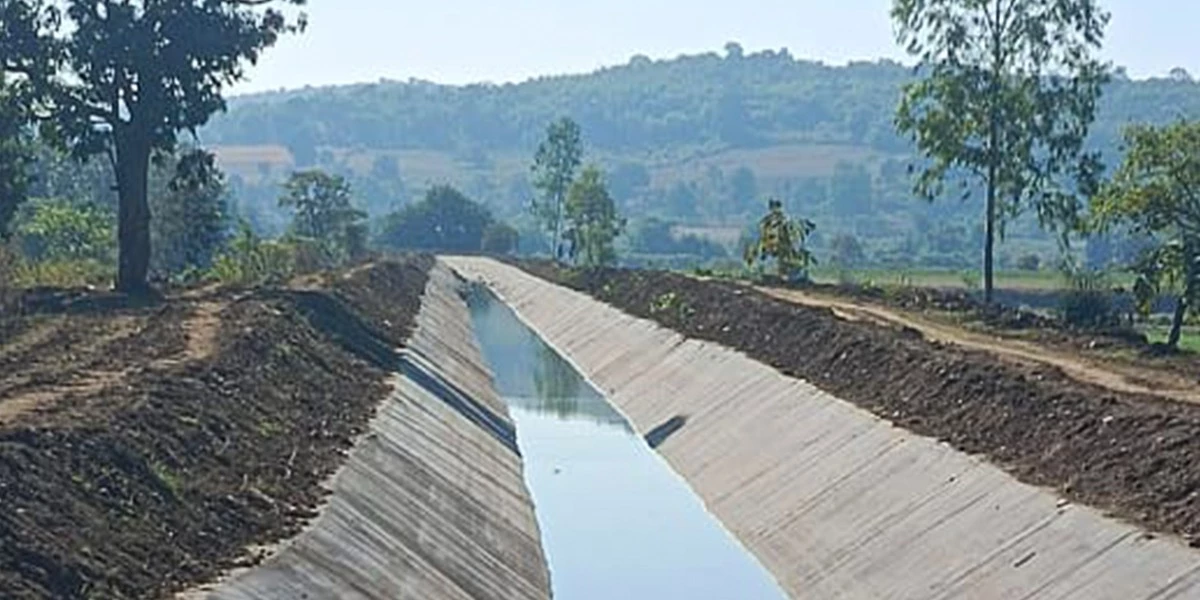

Choosing Canal lining is essential in canals to control water flow and prevent seepage losses effectively. Various materials like cement, bricks, boulders, plastics, compacted earth, and concrete can be utilised for constructing the impermeable layer. By implementing canal linings, you can obstruct the band of water loss. Adding an impermeable layer to the edges of the trench is the key to canal lining solutions, a process that aims to minimize seepage loss of irrigation water. By doing so, irrigation systems can become significantly more efficient, as seepage can account for the bountiful loss of water from canals. Additionally, canal linings serve the purpose of preventing weed growth, which has the potential to spread and hinder water flow within the irrigation system. Moreover, lining a canal can effectively prevent waterlogging in low-lying areas adjacent to the canal. Yooil Envirotech has also marked out the page on the importance of portable Canal Lining Solutions in India.
Traditional canal lining solutions have been in use since eternity but have proved to be a pocket of loopholes. Traditional canal lining methods such as concrete lining, can lead to several environmental problems, including:
Habitat destruction: Concrete canals can have a detrimental effect on the environment as they destroy the natural homes of plants and animals, ultimately causing a decline in biodiversity. This is because concrete is impermeable, preventing water from penetrating the ground. Consequently, the vegetation surrounding the canal withers away, leaving the soil parched and infertile. The consequences of this can be devastating for the local wildlife, as numerous species rely on these habitats for their survival, including finding nourishment, seeking shelter, and reproducing.
Soil erosion: Concrete canals have the ability to enhance the speed at which guardians water flows through them, resulting in the erosion of the canal banks. This occurs because water flowing over concrete experiences less friction compared to water flowing over soil, enabling it to move faster and carry a greater amount of sediment. Additionally, concrete canals tend to limit the growth of vegetation along their banks. Vegetation plays a crucial role in stabilising the soil and preventing erosion by firmly anchoring it with its roots. However, when vegetation is removed, the soil becomes more susceptible to erosion caused by wind and water. Consequently, this can lead to an increase in soil erosion in the vicinity of the canal.
Water pollution: Concrete can leach chemicals into the water, such as calcium, magnesium, and sodium. These chemicals can harm aquatic life and make the water unsafe to drink. Concrete can erode over time, releasing particles into the water. These particles can cloud the water and make it difficult for aquatic life to survive. Concrete canals can destroy natural habitats for plants and animals, leading to biodiversity loss.
Increased water temperature: Concrete lining can absorb heat from the sun, raising the temperature of the water in the canal. This can have negative impacts on aquatic ecosystems.
With a gloomy list of consequences, the hourglass substituted the traditional solutions with eco-friendly alternatives.
The cincture of eco friendly innovations canal lining solutions includes various types of canal lining solutions that can minimise the hazardous impacts clouded by the traditional practices.
Clay Lining: Clay is a versatile and widely used material, mainly due to its excellent water retention properties. Its natural ability to resist water makes it a valuable choice for a variety of applications such as covering ponds, gardens and other water retaining structures. However, one of the main disadvantages of clay siding is its susceptibility to cracking and shrinkage when exposed to drying conditions. This sensitivity is mainly due to the properties of clay, as its volume can change significantly when it absorbs or loses moisture.
Geomembranes: Among the various eco-friendly canal lining solutions, geomembranes stand out as a versatile and effective approach. Geomembranes are thin, synthetic liners made from materials like polyethylene, polypropylene, or ethylene vinyl acetate. Geomembranes form a strong and continuous barrier against water seepage, preventing water loss and minimising evaporation. This translates to efficient water conservation and improved irrigation efficiency.
Yooil Envirotech, a leading water management company with over 30 years of experience, has pioneered the use of geomembranes in India. In 2019, they accomplished a groundbreaking feat by successfully constructing India's first canal lining project utilising bituminous geomembrane technology in Nagpur, Maharashtra. This project demonstrated their expertise in applying advanced technologies to enhance water management practices.With a proven track record of over 400 successful projects, Yooil Envirotech has established itself as a trusted partner in canal lining solutions. Their commitment to innovation and eco-friendly practices has made them a pioneer in the Indian water management industry.
Bentonite Mats: Bentonite mats, also known as geosynthetic clay liners, have been utilised for several years as a reliable natural solution for preventing the leakage of liquids and gases in various applications. These applications include landfill sites, road construction, water engineering structures, and the creation of storage and rainwater retention basins. Unlike traditional mineral sealing materials like clay, bentonite mats offer consistent high-quality results and significant economic advantages.
Traditional canal lining solutions might have been a shoulder of assistance since eternity, but the chaos that flamed off the sparks of these solutions have burned down the minor and major pockets of the environment. Organisations such as Yooil Envirotech detected the cracks in the wall of traditional solutions and designed the environment-friendly canal lining solutions that have helped create a line of shelter while maintaining peace for the environment.
